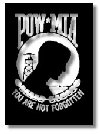
Operation Just Cause


 Name: Robert Joseph Acalotto
Name: Robert Joseph AcalottoOther Personnel in Incident: Jon E. Reid; Randolph L. Johnson; David M. May (all missing)
Source: Compiled by Homecoming II Project 01 September 1990 from one or more of the following: raw data from U.S. Government agency sources, correspondence with POW/MIA families, published sources, interviews.
REMARKS:
SYNOPSIS: Lam Son 719 was a large-scale offensive against enemy communications lines which was conducted in that part of Laos adjacent to the two northern provinces of South Vietnam. The South Vietnamese would provide and command ground forces, while U.S. forces would furnish airlift and supporting fire.
Phase I, renamed Operation Dewey Canyon II, involved an armored attack by the U.S. from Vandegrift base camp toward Khe Sanh, while the ARVN moved into position for the attack across the Laotian border. Phase II began with an ARVN helicopter assault and armored brigade thrust along Route 9 into Laos. ARVN ground troops were transported by American helicopters, while U.S. Air Force provided cover strikes around the landing zones.
During one of these maneuvers, W1 Jon E. Reid was was flying a UH1C helicopter (serial #66-700) with a crew of three - 1Lt. David M. May, co-pilot, SP5 Randall L. Johnson, crew chief, and SP4 Robert J. Acalotto, door gunner - on a mission providing gun cover for an emergency resupply mission about 20 miles southeast of Sepone, Laos. The aircraft was hit by hostile fire and crashed.
When the helicopter landed, it was upright on its skids, with the tail boom broken off and the right aft burning. Witnesses stated that it was certainly a "survivable crash." Two people were seen exiting the aircraft on the right side, running towards nearby trees. Witnesses noted that the left pilot door was jettisoned and that both forward seats were empty. Several attempts were made to rescue the downed crew, but were unsuccessful because of heavy enemy fire. The 1st ARVN Division was to assist in a ground rescue attempt, but the tactical situation changed before the infantry could reach the area, and the unit had to be pulled out. No contact with the crew was ever established after the crash.
According to information received by his family, John Reid was known to have been captured and was seen alive by other U.S. POWs in March of that same year, again in May and once in June. Whether the rest of the crew was captured is unknown. When the POWs were released in 1973, Reid was not among them, nor was the rest of the crew. The communist governments of Southeast Asia claim no knowledge of the fate of the crew of the UH1C that went down February 20, 1971.
Proof of the deaths of May, Reid, Acalotto and Johnson was never found. No remains came home; none was released from prison camp. They were not blown up, nor did they sink to the bottom of the ocean. Someone knows what happened to them.
Were it not for thousands of reports relating to Americans still held captive in Southeast Asia today, the families of the UH1C helicopter crew might be able to believe their men died with their aircraft. But until proof exists that they died, or they are brought home alive, they will wonder and wait.
How long must they wait before we bring our men home?
David M. May was promoted to the rank of Captain, Jon E. Reid to the rank of Chief Warrant Officer, Randolph L. Johnson to the rank of Sergeant First Class, and Robert J. Acalotto to the rank of Staff Sergeant during the period they were maintained missing.
I cannot emphasize enough how important it is to keep pushing this issue inside the Beltway... The need to get specific answers is more important now than ever before. If still alive, some MIAs are now in their 70s...They don't have much time left. We have to demand the answers from the bureaucrats and keep standing on their necks (figuratively speaking) until they get the message that THEY work for US and that we are serious about getting these long overdue responses. Diplomatic considerations aside... We can no longer allow questionable protocols established by pseudo-aristocratic armchair strategists, to determine or influence the fate of the men who were in the trenches while the diplomats were sharing sherry and canapes and talking about "Their Plans" for the future of SE Asia.
If you'd like to see what some others are doing in addition to writing their congressmen, senators and the Whitehouse, check out some of these sites: http://hawk.nji.com/~mred/mialist.htm
Nearly 2500 Americans were lost in Southeast Asia during our miltary involvement there. Since the war in Southeast Asia ended in 1973, thousands of reports relating to Americans prisoner, missing or unaccounted for have been received by the U.S. Government. The official policy is that no conclusive proof has been obtained that is current enough to act upon. Detractors of this policy say conclusive proof is in hand, but that the willingness or ability to rescue these prisoners does not exist.
| front page | | inspirational | poetry | children | religion | lifestyle | laws of nature | fun page |